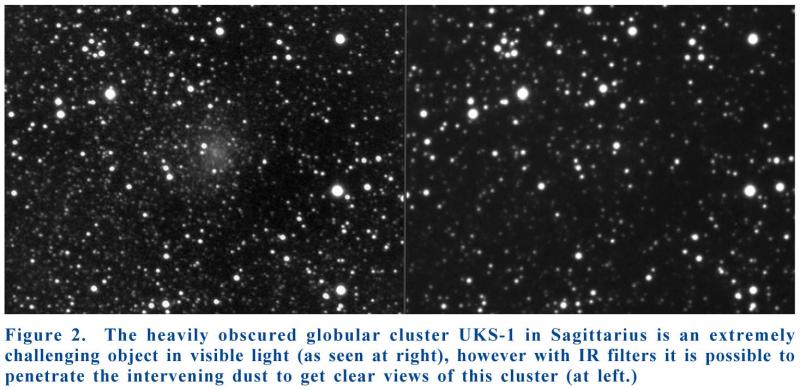Hunting down the most remote and obscure globular clusters
2017 July 21
Globular star clusters are without doubt among the most spectacular objects to be found in the night sky. I’m sure many of us well remember our first views of objects such as Omega Centauri, 47 Tucanae or Messier 13. Indeed I consider 47 Tucanae perhaps the most spectacular object I have ever observed.
There are many other globular clusters scattered throughout the sky. Many are fairly close to us in terms of their distance. However, there are some little known clusters that are incredibly remote, lying further away than the nearest galaxies. There are also many clusters that are heavily obscured by dust clouds in our own galaxy. Hunting these elusive targets down can be both challenging and rewarding. Luckily with the advent of modern imaging technology it is now easily possible to hunt down these little known gems – once you know where to look!
Some facts and figures There are more than 150 globular clusters bound to the Milky Way galaxy in a large halo. This number may seem quite high but in fact it is not. Larger galaxies such as Messier 31 have as many as 500 such clusters in orbit around the galaxy, while the largest galaxies known have many thousands. In fact almost every galaxy we look at (of sufficient mass) in the night sky has a system of globular clusters bound to it. Their origin and formation remain a matter of debate among astronomers, however they may be related in some way to dwarf spheroidal galaxies.
There are more than 150 globular clusters bound to the Milky Way galaxy in a large halo. This number may seem quite high but in fact it is not. Larger galaxies such as Messier 31 have as many as 500 such clusters in orbit around the galaxy, while the largest galaxies known have many thousands. In fact almost every galaxy we look at (of sufficient mass) in the night sky has a system of globular clusters bound to it. Their origin and formation remain a matter of debate among astronomers, however they may be related in some way to dwarf spheroidal galaxies.
Globulars are typically the oldest objects associated with their parent galaxy, containing some of the first collections of stars to have formed. Stars within these clusters are often described as ‘metal-poor’, meaning they lack the heavier elements found in stars like the Sun. Globular clusters also display no active star formation, which is a good indicator of their ancient nature. Since many clusters are lacking in heavier elements it is thought that small terrestrial planets are probably quite rare within them. The result of just such a search on the bright cluster 47 Tucanae several years ago found no planet candidates within the cluster, however more recently a planet was discovered within the bright cluster Messier 4.
Distant galactic wanderers
While most globular clusters that we can see are within approximately 50,000 light years of us, some are very remote indeed. Many readers may be familiar with NGC 2419 – affectionately known as the ‘intergalactic wanderer’ as it was once believed this cluster was not in orbit around our galaxy. Although some 275,000 light years away from us, it is still a fairly easy object to observe, glowing at 9th magnitude and within easy reach of small telescopes. Some clusters however are far more remote even than this… (continued)
(Login or click above to view the full illustrated article in PDF format)
| The British Astronomical Association supports amateur astronomers around the UK and the rest of the world. Find out more about the BAA or join us. |
